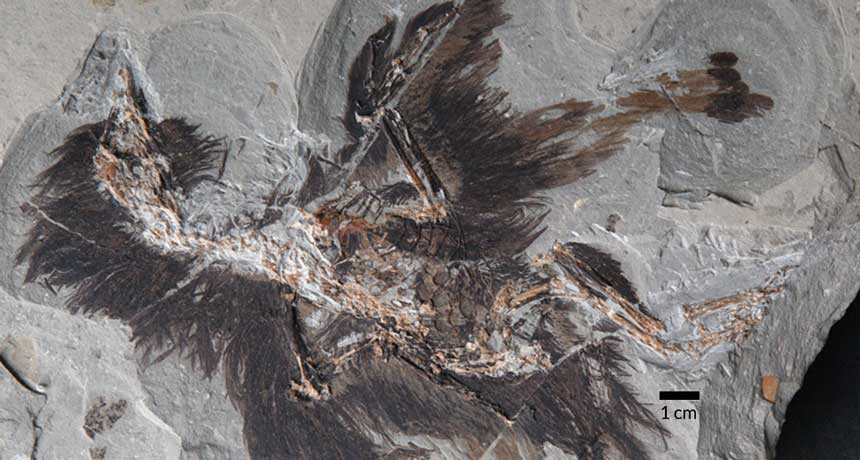Cretaceous bird find holds new color clue

A 130-million-year-old bird holds a clue to ancient color that has never before been shown in a fossil.
Eoconfuciusornis’ feathers contain not only microscopic pigment pods called melanosomes, but also evidence of beta-keratin, a protein in the stringy matrix that surrounds melanosomes, Mary Schweitzer and colleagues report November 21 in the Proceedings of the National Academy of Sciences.
Together, these clues could strengthen the case for inferring color from dinosaur fossils, a subject of debate for years (SN: 11/26/16, p. 24). Schweitzer, a paleontologist at North Carolina State University in Raleigh, has long pointed out that the microscopic orbs that some scientists claim are melanosomes may actually be microbes. The two look similar, but they have some key differences. Microbes aren’t enmeshed in keratin, for one.
In Eoconfuciusornis’ feathers, Schweitzer and colleagues found round, 3-D structures visible with the aid of an electron microscope. And a molecular analysis revealed bundles of skinny fibers, like the filaments of beta-keratin in modern feathers. The authors don’t speculate on the bird’s color, but they do offer a new way to support claims for ancient pigments.
“Identifying keratin is key to ruling out a microbial source for microbodies identified in fossils,” they write.